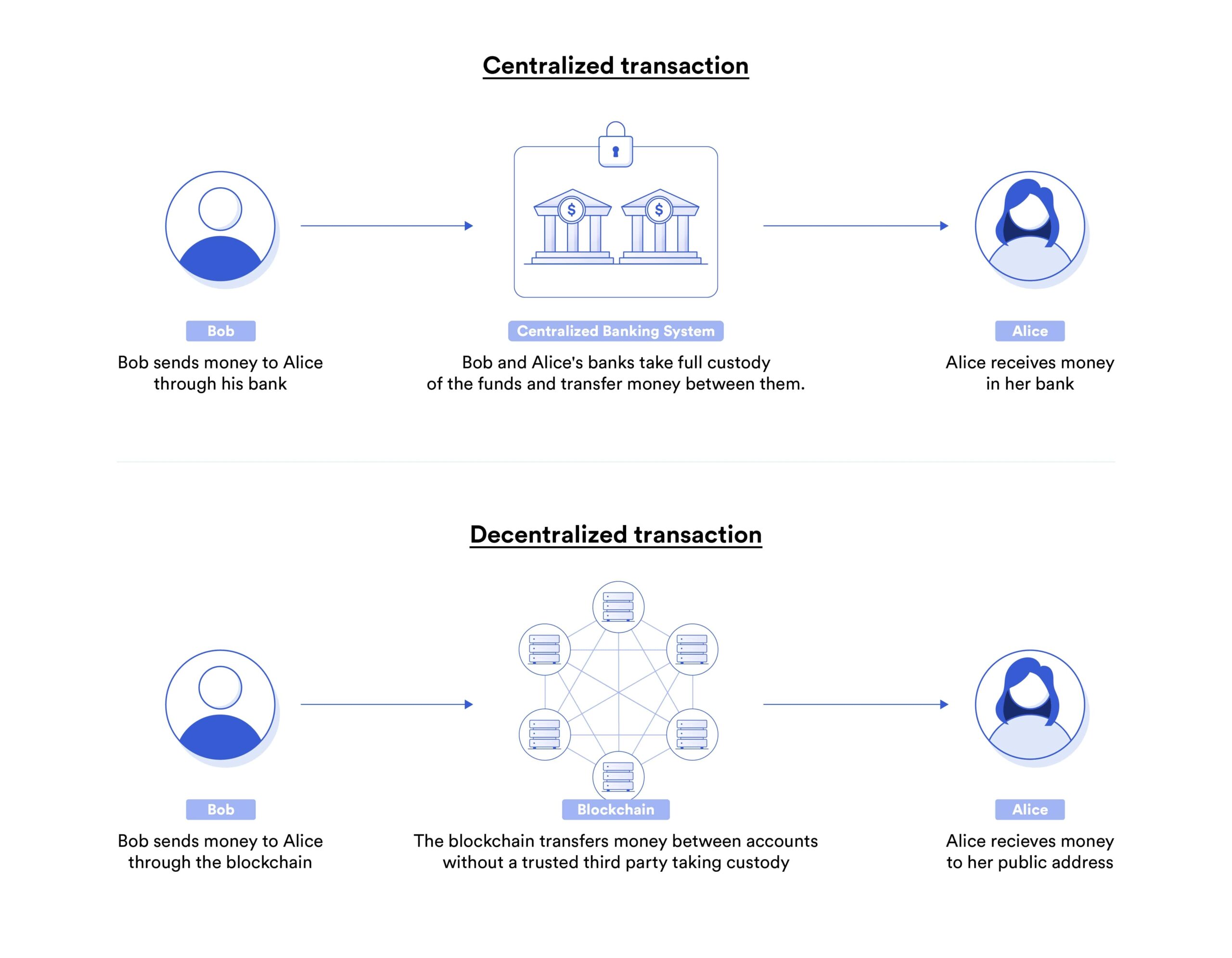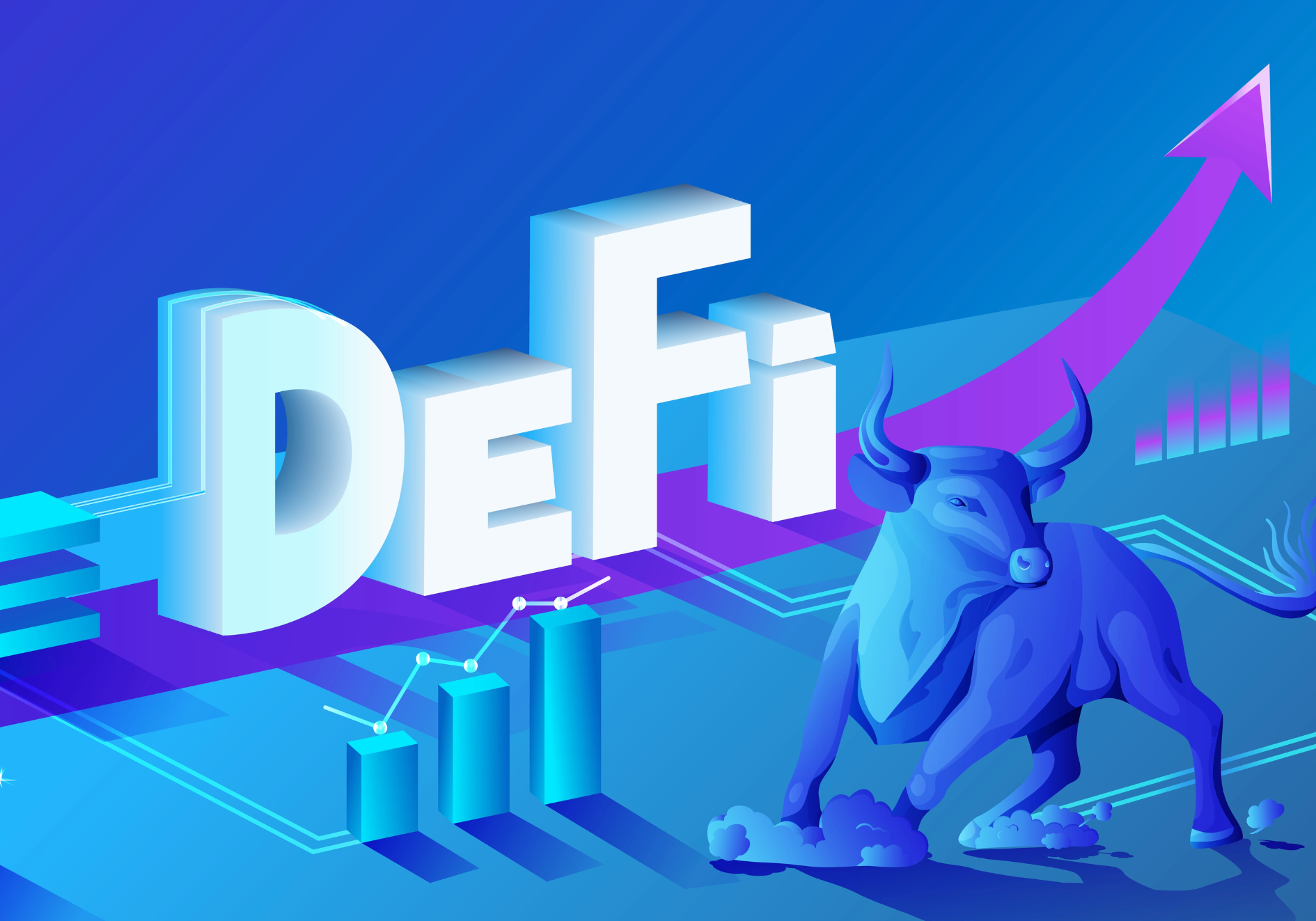Introduction
Decentralized Finance (DeFi) is a financial ecosystem built on blockchain technology that eliminates the need for traditional intermediaries such as banks, brokers, and centralized institutions.
By leveraging smart contracts and decentralized networks, DeFi provides open, transparent, and easily accessible financial services to anyone with an internet connection.
What is DeFi?
DeFi is an umbrella term for financial services operating on public blockchains, primarily Ethereum. It allows users to conduct financial transactions similar to those offered by banks—such as earning interest, borrowing, lending, buying insurance, trading derivatives, and exchanging assets—without intermediaries.
Key characteristics of DeFi include:
- Global Accessibility – Available to anyone worldwide without requiring approval.
- Peer-to-Peer Transactions – Users interact directly without middlemen.
- Transparency – Transactions are recorded on a public ledger, ensuring accountability.
- Efficiency – Faster transactions without paperwork or bureaucratic delays.
DeFi expands on Bitcoin’s original vision of a digital financial system while eliminating traditional financial infrastructure costs, such as bank branches, trading floors, and administrative fees.
This approach creates a more open, free, and fair financial market, where anyone with an internet connection can participate.

How DeFi Works
How DeFi Works
DeFi primarily operates on public blockchains, with Ethereum being the most widely used platform due to its robust smart contract capabilities. Unlike traditional banking, there is no need to fill out applications or open accounts.
1. Smart Contracts
Self-executing agreements written on the blockchain that automatically enforce financial terms without intermediaries. For example, a smart contract can release collateral once a loan is repaid.
2. Decentralized Applications (dApps)
DeFi services are provided through open-source applications running on the blockchain. Users interact with dApps for activities such as:
- Lending and borrowing
- Staking
- Yield farming
3. Blockchain Technology
A distributed ledger records all transactions transparently. Nodes (computers in the network) verify transactions without a central authority.
4. Tokenization
DeFi relies on digital tokens (cryptocurrencies and stablecoins) to represent assets or rights within the ecosystem and facilitate transactions.
5. Liquidity Pools
Instead of traditional market makers, DeFi uses liquidity pools—funds locked into smart contracts by users—to enable trading on decentralized exchanges (DEXs) such as Uniswap and SushiSwap. Contributors earn fees as rewards.
6. Interoperability
DeFi protocols work together, allowing users to combine multiple services (e.g., borrowing from one platform and investing on another) without requiring permission.
The Potential of DeFi
DeFi has the potential to reshape financial systems by offering:
1. Financial Inclusion
DeFi provides access to financial services for the unbanked or underbanked, an estimated 1.7 billion people worldwide who lack access to traditional banking due to geographic, economic, or regulatory barriers.
2. Cost Efficiency
By eliminating intermediaries, DeFi reduces:
- Banking fees
- Lending costs
- Asset management expenses
Users maintain full control over their funds and benefit from lower transaction costs.
3. Transparency and Trust
- All transactions are recorded on a public blockchain, ensuring transparency.
- Smart contracts replace trust-based systems, reducing fraud and central authority risks.
4. Innovation
DeFi enables the creation of new financial products, such as:
- Flash loans – Instant loans without collateral.
- Yield farming – Earning rewards by providing liquidity to DeFi protocols.
5. Global Access
DeFi operates 24/7, unaffected by time zones or national borders. Anyone with a crypto wallet and an internet connection can participate.
6. Disrupting Traditional Finance
With increasing adoption, DeFi challenges traditional financial institutions, forcing them to adapt to blockchain-based solutions. Unlike banks, DeFi users do not need to register accounts or complete applications—only a crypto wallet is required.
Challenges of DeFi
While DeFi presents significant advantages, it also faces challenges:
1. High Transaction Fees
Ethereum-based transactions can be expensive due to network congestion, making frequent transactions costly.
2. Price Volatility
DeFi assets can be highly volatile, depending on the dApp used and investment strategy.
3. Tax Responsibility
Users must track transactions for tax reporting, and DeFi regulations vary by region.
Conclusion
Decentralized Finance is a revolutionary alternative to traditional financial systems, offering flexibility, transparency, and financial empowerment. Its mechanisms enable a more open and accessible economy.
However, DeFi must overcome technical, regulatory, and accessibility challenges before reaching mainstream adoption. As the sector evolves, it has the potential to redefine global finance by merging technology with economic inclusion.nomic empowerment.




